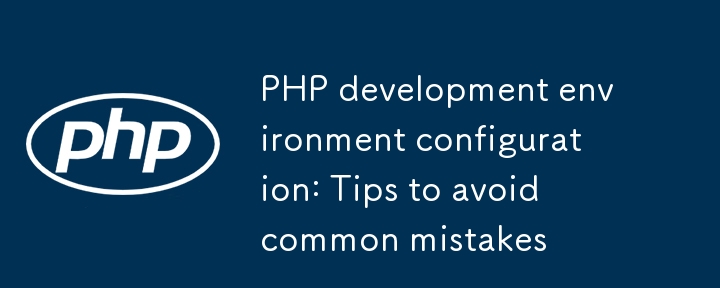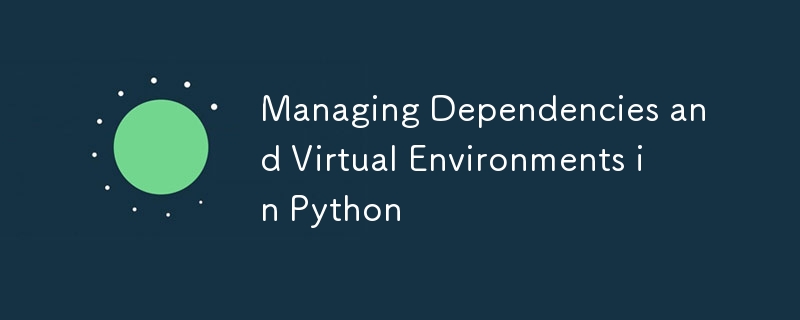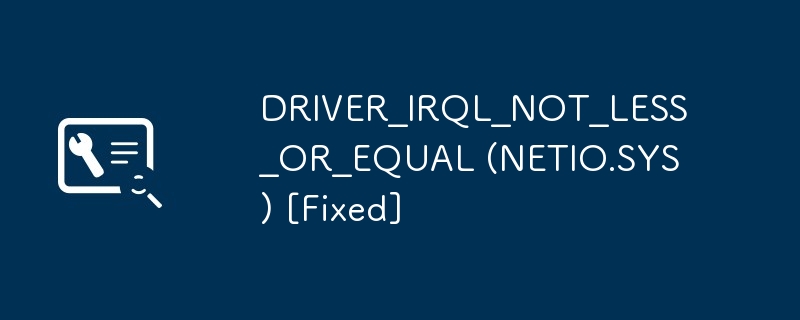Found a total of 10000 related content

Understanding Linux: The Core Components Defined
Article Introduction:The core components of Linux include kernel, shell, file system, process management and memory management. 1) Kernel management system resources, 2) shell provides user interaction interface, 3) file system supports multiple formats, 4) Process management is implemented through system calls such as fork, and 5) memory management uses virtual memory technology.
2025-05-01
comment 0
337

Debian mail server virtual host configuration method
Article Introduction:Configuring a virtual host for mail servers on a Debian system usually involves installing and configuring mail server software (such as Postfix, Exim, etc.) rather than Apache HTTPServer, because Apache is mainly used for web server functions. The following are the basic steps for configuring a mail server virtual host: Install Postfix Mail Server Update System Package: sudoaptupdatesudoaptupgrade Install Postfix: sudoapt
2025-04-13
comment 0
1103

LXD 6.1 Released With Automatic IP Allocation, VM Core Pinning And More
Article Introduction:LXD 6.1, the inaugural release in the 6.x series, brings substantial enhancements to container and virtual machine management. This update prioritizes network capabilities, VM performance optimization, and robust system security.
Key Features:
Aut
2025-03-16
comment 0
929

Where are the Apache access and error logs located?
Article Introduction:The default locations of Apache access logs and error logs vary according to the system and configuration. You can find them in the following ways: 1. The common paths under Linux systems are /var/log/apache2/ (Ubuntu/Debian) or /var/log/httpd/, which contain access.log and error.log respectively; 2. By editing the Apache configuration file /etc/apache2/apache2.conf or /etc/httpd/conf/httpd.conf, find the CustomLog and ErrorLog instructions to confirm the current log path; 3. If you use a virtual host, you need to use the virtual host configuration file such as /
2025-07-17
comment 0
803

Apache Interview Questions: Ace Your System Administrator Interview
Article Introduction:When preparing for an Apache system administrator interview, you should master the following core knowledge points: 1. Apache's virtual hosting function allows a single server to host multiple domain names or websites. 2. Apache's module system extends functions through loading modules, such as logging and security authentication. 3. Apache's configuration file (such as httpd.conf) defines server settings and virtual host configuration. 4. Basic operations include starting, stopping and restarting the Apache server. 5. Advanced configurations such as SSL/TLS certificate setting to implement HTTPS connections. 6. Common errors are debugged by checking the configuration file syntax and viewing the error log. 7. Performance optimization methods include enabling caching and selecting multi-threaded or multi-process modes. 8. Best Practices
2025-04-02
comment 0
755

What is a container and how does it differ from a virtual machine?
Article Introduction:The core difference between containers and virtual machines (VMs) is the isolation method and resource usage. 1. The container shares the host system kernel, and achieves process isolation through namespace and cgroups, and is lightweight and fast-start, suitable for microservices and cloud-native applications; 2. The virtual machine simulates a complete computer, including an independent operating system, providing stronger isolation but consumes a lot of resources, suitable for running legacy systems or multi-operating system environments; 3. In actual use, containers, VMs or combinations can be selected according to needs to take into account performance and security.
2025-07-05
comment 0
823

How to solve PyTorch compatibility issues on CentOS
Article Introduction:Installing and configuring PyTorch on CentOS system and making full use of GPU to accelerate deep learning tasks, you can follow the following steps: Step 1: Installing Anaconda3 First, use Anaconda3 as a Python environment management tool to facilitate the installation and management of PyTorch and its dependent libraries. Download the Anaconda3 installation script and execute: wgethttps://repo.anaconda.com/archive/Anaconda3-2024.05-Linux-x86_64.shbashAnaconda3-2024.05-Linux-x86_64.shStep 2: Create virtual
2025-04-14
comment 0
1229

How to fix SYSTEM_PTE_MISUSE BSOD
Article Introduction:When encountering a SYSTEM_PTE_MISUSE blue screen error, it is usually caused by driver incompatibility, memory management exceptions, or system file corruption. 1. Update or roll back the graphics card driver, use the device manager or official website tool to update, or completely uninstall and reinstall through DDU; 2. Check the system memory and virtual memory settings, run the Windows MemoryDiagnostic tool and adjust the virtual memory size to avoid interference from third-party memory optimization software; 3. Execute sfc/scannow and DISM commands to check and repair system files; 4. Disable or uninstall conflicting software, such as security software or virtual machine tools, and enter the "clean boot" mode to troubleshoot problems. In most cases, the problem lies in the driver or memory. It is recommended to follow the steps.
2025-07-27
comment 0
211

Linux Memory Management: Understanding Page Tables, Swapping, and Memory Allocation
Article Introduction:Introduction
Memory management is a key aspect in modern operating systems, ensuring efficient allocation and release of system memory. As a powerful and widely used operating system, Linux uses sophisticated techniques to efficiently manage memory. Understanding key concepts such as page tables, swaps, and memory allocation is critical to system administrators, developers, and anyone using Linux at the bottom.
This article discusses Linux memory management in depth, explores the complexity of page tables, the role of exchange, and different memory allocation mechanisms. After reading, readers will gain insight into how Linux handles memory and how to optimize memory for better performance.
Understand Linux page tables
What is virtual memory? Linux
2025-03-22
comment 0
1075

What is Docker Swarm, and how does it work?
Article Introduction:DockerSwarm is a clustering and orchestration tool for managing multiple Docker hosts. Its core function is to deploy and scale containerized applications as a single virtual host. It adopts the architecture of management nodes and work nodes. The management node is responsible for scheduling and service management. The work node runs containers, and supports the elastic expansion and capacity of services and self-healing of faults. To initialize the Swarm cluster, first run the dockerswarminit command on one machine, and then use the output join command to join other nodes as workers. When deploying services, dockerservicecreate must specify parameters such as mirror, number of replicas and network ports. Swarm will automatically distribute and maintain it across nodes.
2025-06-30
comment 0
869

C pure virtual function example
Article Introduction:Pure virtual functions are functions declared in the base class but not implemented, and forced derived classes to provide specific implementations. Its form is virtualvoidfunc()=0;, and a class containing at least one pure virtual function is called an abstract class and cannot be instantiated directly. When using pure virtual functions, clear interfaces need to be designed, and subclasses implement functions according to requirements, such as shape area calculation in the graphics system. Notes include: non-institialization of abstract classes, definable constructors and non-pure virtual functions, and it is recommended to use virtual destructors to prevent memory leakage. Abstract classes are often used in C to simulate interfaces and implement modular development, such as game character behavior management or database driver adaptation.
2025-07-27
comment 0
398

PHP development environment configuration: Tips to avoid common mistakes
Article Introduction:The key to configuring a PHP development environment is to select the right tool, pay attention to the matching of versions and extensions, and set up the virtual host correctly. Newbie recommends using XAMPP or Laragon one-click installation; experienced people can choose Docker or Vagrant; manual compilation is not recommended. Different projects need to pay attention to the differences in PHP versions, view the version and extensions through php-v and php-m, modify the php.ini to enable the module, and confirm whether the configuration file path is loaded correctly. When configuring the virtual host, you must ensure that Apache's DocumentRoot points to the project directory correctly, check the ServerName and directory configuration in httpd-vhosts.conf, and pay attention to the system permission settings and the main configuration article.
2025-06-26
comment 0
367

How to fix 'DRIVER_OVERRAN_STACK_BUFFER' error?
Article Introduction:Solutions to the "DRIVER_OVERRAN_STACK_BUFFER" error include: 1. Update or rollback the driver, and give priority to using the version provided by the manufacturer's official website; 2. Uninstall third-party driver management software or check the virtual machine-related components; 3. Run sfc/scannow and DISM commands to repair system files; 4. Position specific drivers that cause problems through blue screen log location and perform targeted processing.
2025-07-20
comment 0
771

Local PHP Development Environment Setup
Article Introduction:If you want to build a PHP development environment locally, you can achieve it through the following steps: 1. Install an integrated environment such as XAMPP, WAMP or MAMP, or manually install Apache, PHP and MySQL respectively; 2. Set up the development directory and virtual host to facilitate multi-project management; 3. Use the PHP built-in server to quickly test small projects; 4. Configure the php.ini file to enable debugging and logging functions to troubleshoot problems. These steps can help you quickly build a stable and easy-to-debug local PHP development environment.
2025-07-18
comment 0
999

Vue.js vs. React: Comparing Performance and Efficiency
Article Introduction:Vue.js and React each have their own advantages: Vue.js is suitable for small applications and rapid development, while React is suitable for large applications and complex state management. 1.Vue.js realizes automatic update through a responsive system, suitable for small applications. 2.React uses virtual DOM and diff algorithms, which are suitable for large and complex applications. When selecting a framework, you need to consider project requirements and team technology stack.
2025-04-28
comment 0
615

Maximizing Your Content Management System with Linux
Article Introduction:Introduction In the evolving field of web development and management, choosing the right operating system (OS) to host your content management system (CMS) can significantly impact the performance, security, and cost-effectiveness of your website. With its open source features and powerful capabilities, Linux has become the first choice for developers and administrators around the world. This article explores the many benefits of using Linux to manage popular CMS platforms such as WordPress and Drupal, focusing on why it becomes the best solution for modern network infrastructure.
Cost-Effective One of the most compelling reasons to choose Linux is its cost-effectiveness. Unlike proprietary operating systems that require expensive licenses, Linux is open source and available for free. Exemption of license fee
2025-03-07
comment 0
1094

Fixing Windows Sandbox not launching
Article Introduction:Common reasons and repair methods for WindowsSandbox cannot start include: 1. Confirm that the system version is Windows 10Pro, Enterprise, Education (1903 or higher) or supported Windows 11 version, and has a virtualized CPU, at least 4GB of memory, 1GB of free space and enabled virtual machine platform function; 2. Turn on Sandbox by "Enable or Turn off Windows Functions" and restart; 3. Check and make sure that the Hyper-V virtual machine management service and Windows Sandbox service are running; 4. Temporarily disable antivirus software or turn off kernel isolation function to eliminate conflicts; 5. Use sfc/scannow and DIS
2025-07-21
comment 0
433

Managing Dependencies and Virtual Environments in Python
Article Introduction:Using a virtual environment can solve dependency conflict problems in Python projects. Because installing packages directly in the system environment can easily lead to dependence and fights between different projects, such as Django 3.2 and 4.2 are incompatible, upgrading the library may cause errors in the old code. Common practices for creating virtual environments include: 1. Use the venv module to create an environment, such as python-mvenv.venv; 2. Activate the environment, use source.venv/bin/activate for macOS/Linux, and use .venv\Scripts\activate for Windows. Management dependencies include: 1. Use pipfreeze>requires.txt to record dependencies, pip
2025-07-06
comment 0
779

DRIVER_IRQL_NOT_LESS_OR_EQUAL (NETIO.SYS) [Fixed]
Article Introduction:Update or rollback the network driver, go to Device Manager to update or rollback the network card driver, it is recommended to download the latest version from the official website; 2. Disable or uninstall third-party antivirus software and firewall, and use WindowsDefender to see if the blue screen disappears; 3. Disable the quick boot and power management functions, turn off the quick boot and cancel the power saving settings of the network card; 4. Run sfc/scannow and DISM/Online/Cleanup-Image/RestoreHealth to repair system files; 5. Update the Windows system and install all available updates to fix compatibility issues; 6. Check and uninstall conflicting virtual network card or VPN software, remove unnecessary virtual network adapters; 7. Make
2025-08-06
comment 0
548

How To Easily Configure Flatpak Apps Permissions With Flatseal
Article Introduction:Flatpak application permission management tool: Flatseal User Guide
Flatpak is a tool designed to simplify Linux software distribution and use. It safely encapsulates applications in a virtual sandbox, allowing users to run applications without root permissions without affecting system security. Because Flatpak applications are located in this sandbox environment, they must request permissions to access other parts of the operating system, hardware devices (such as Bluetooth, network, etc.) and sockets (such as pulseaudio, ssh-auth, cups, etc.). This guide will guide you on how to easily configure Flatpak with Flatseal on Linux
2025-03-22
comment 0
961



















